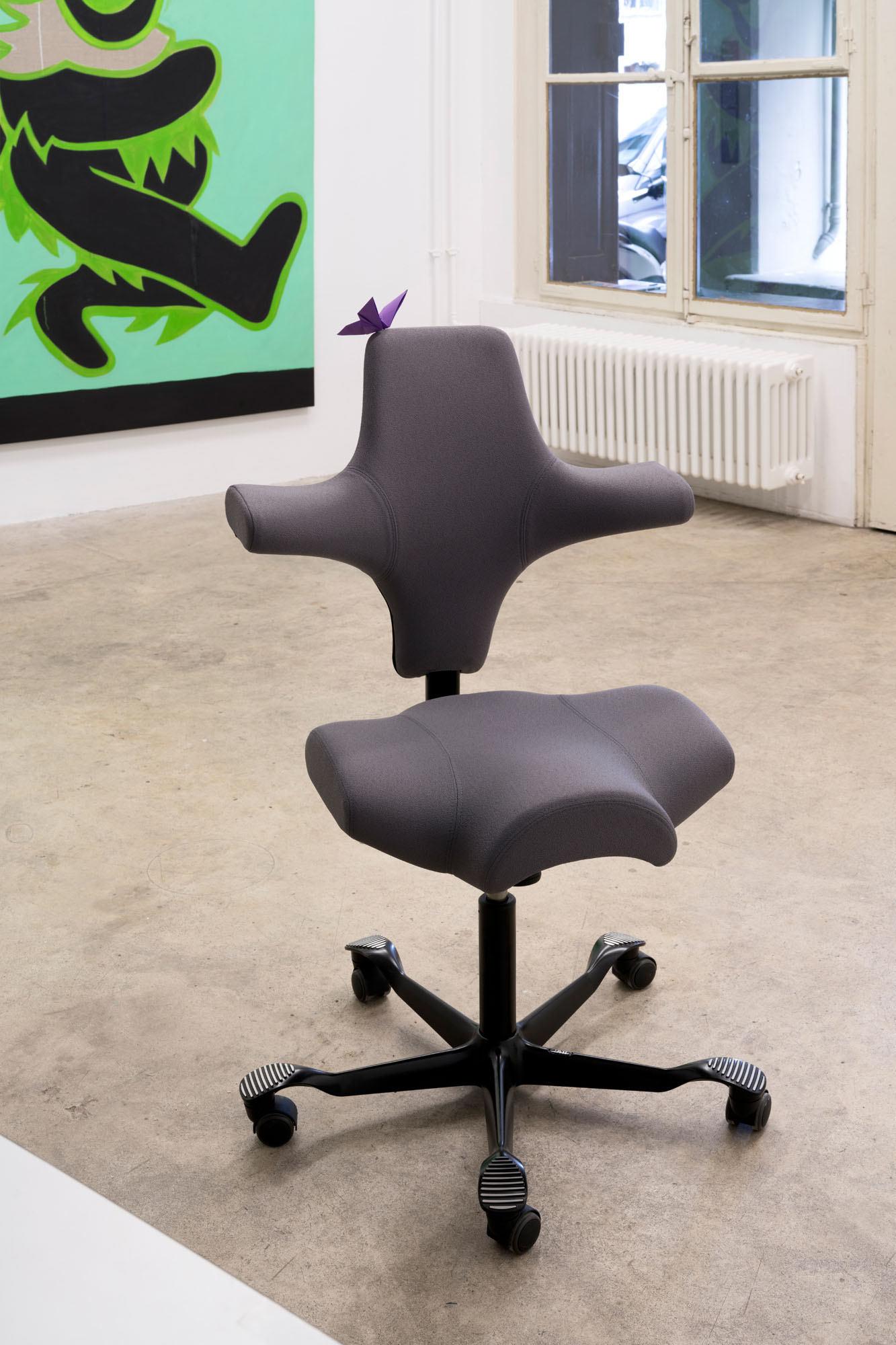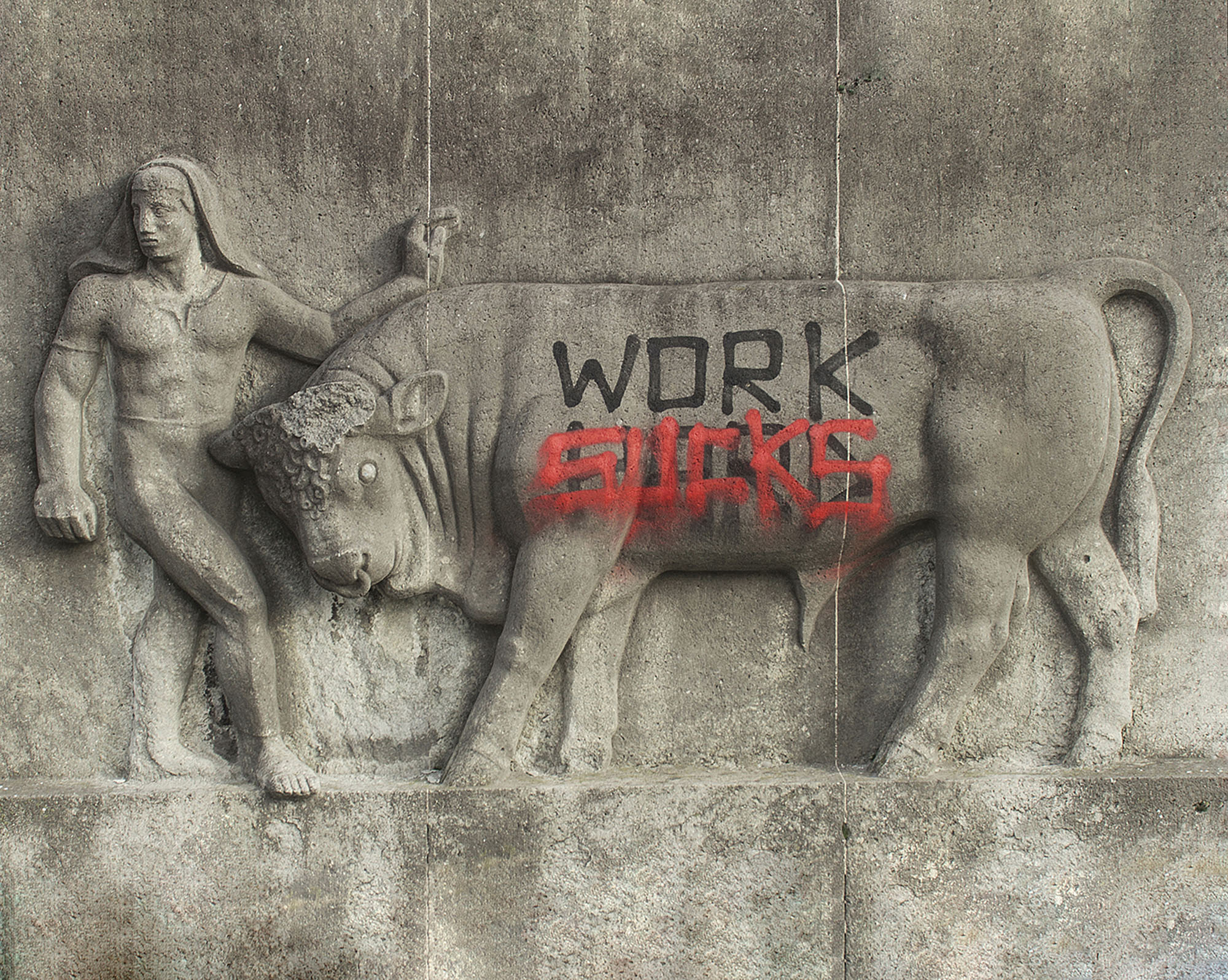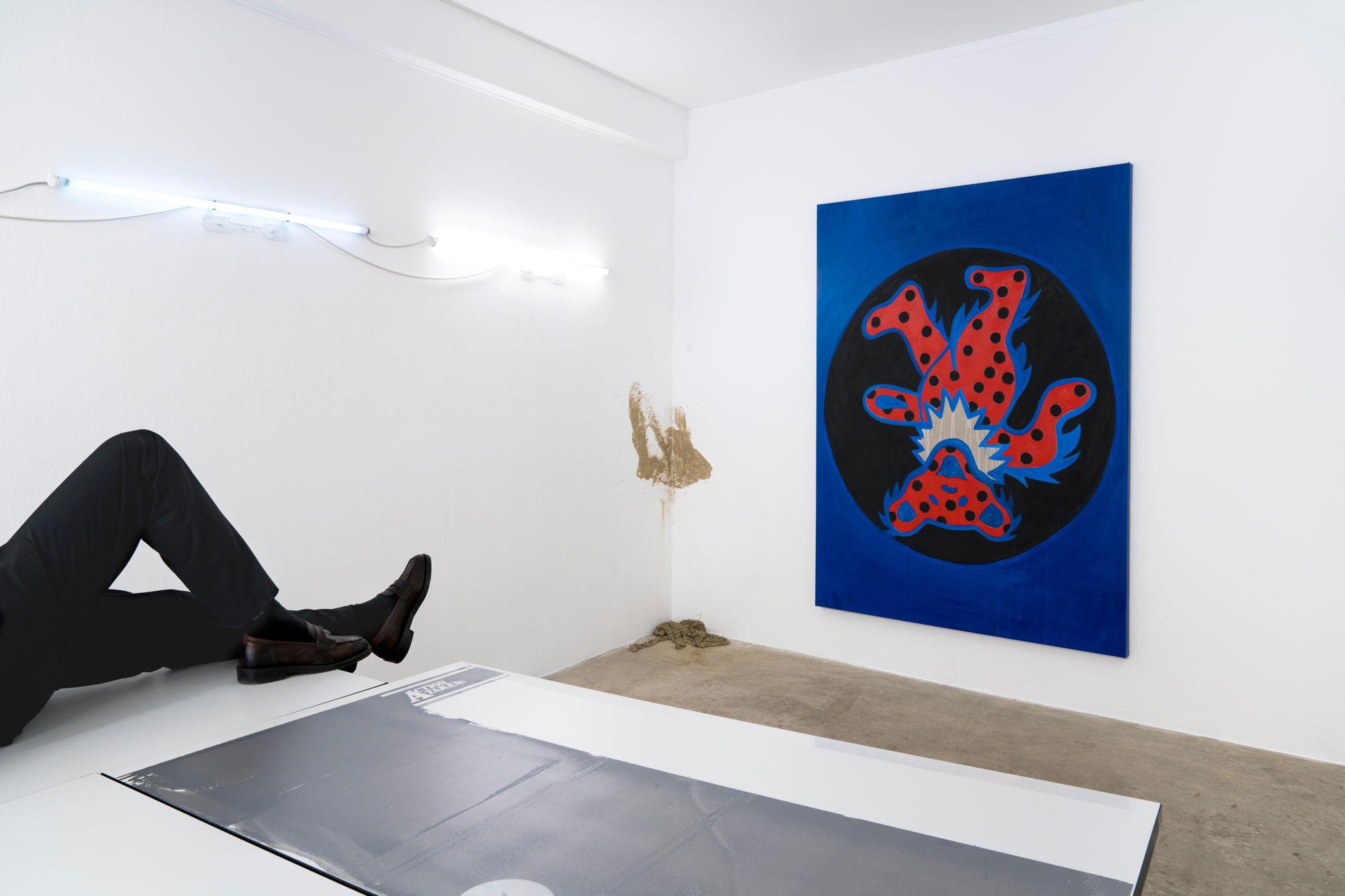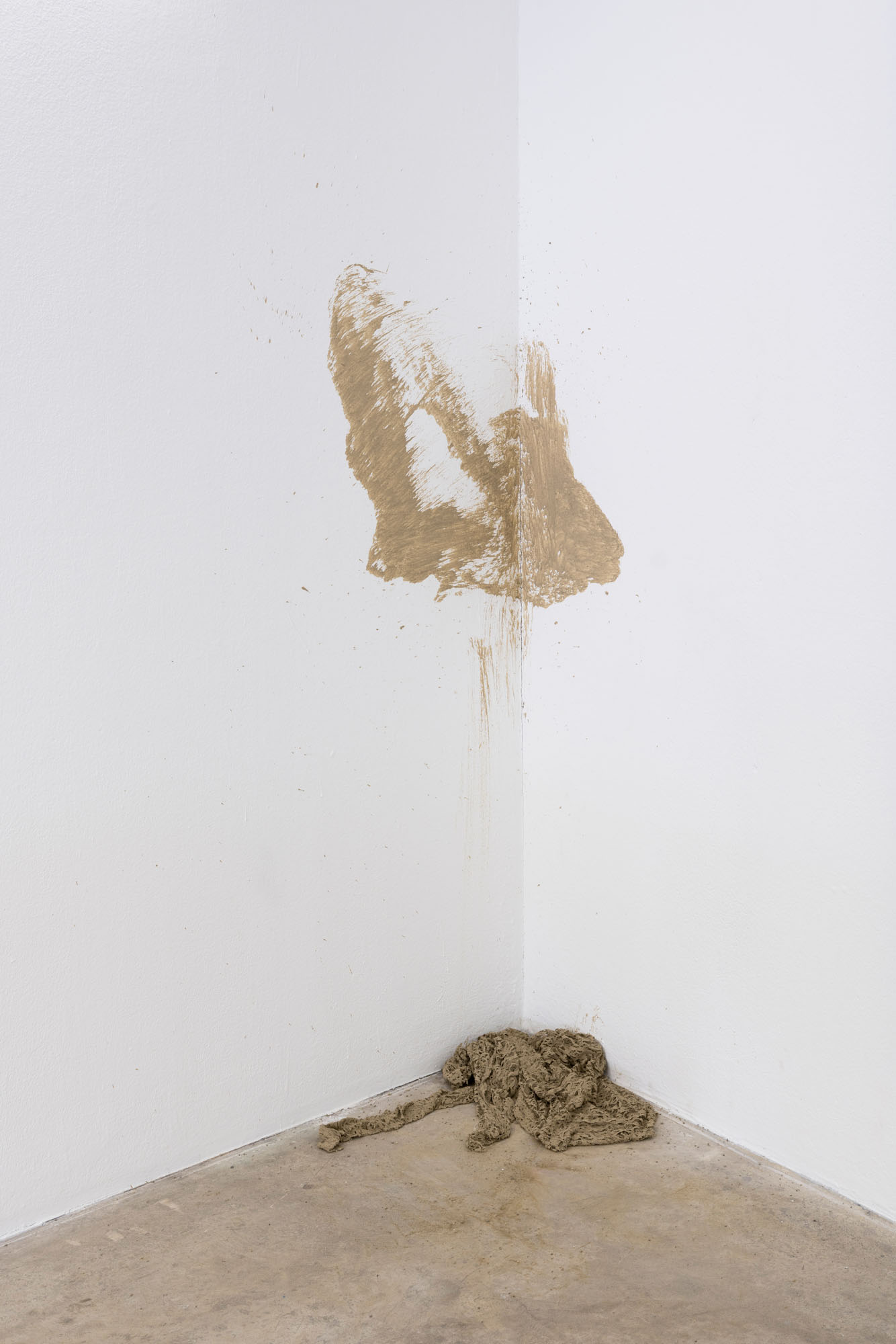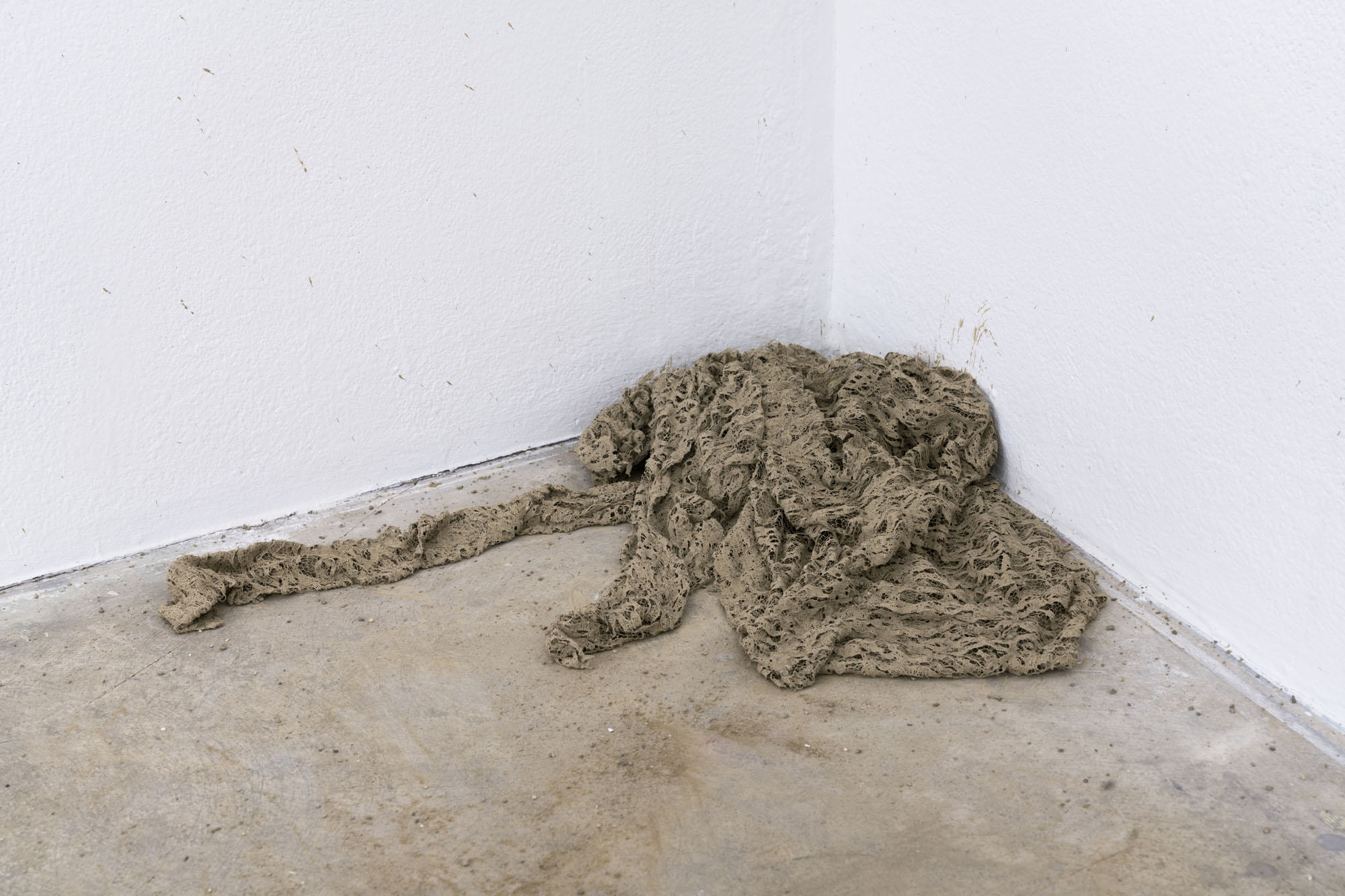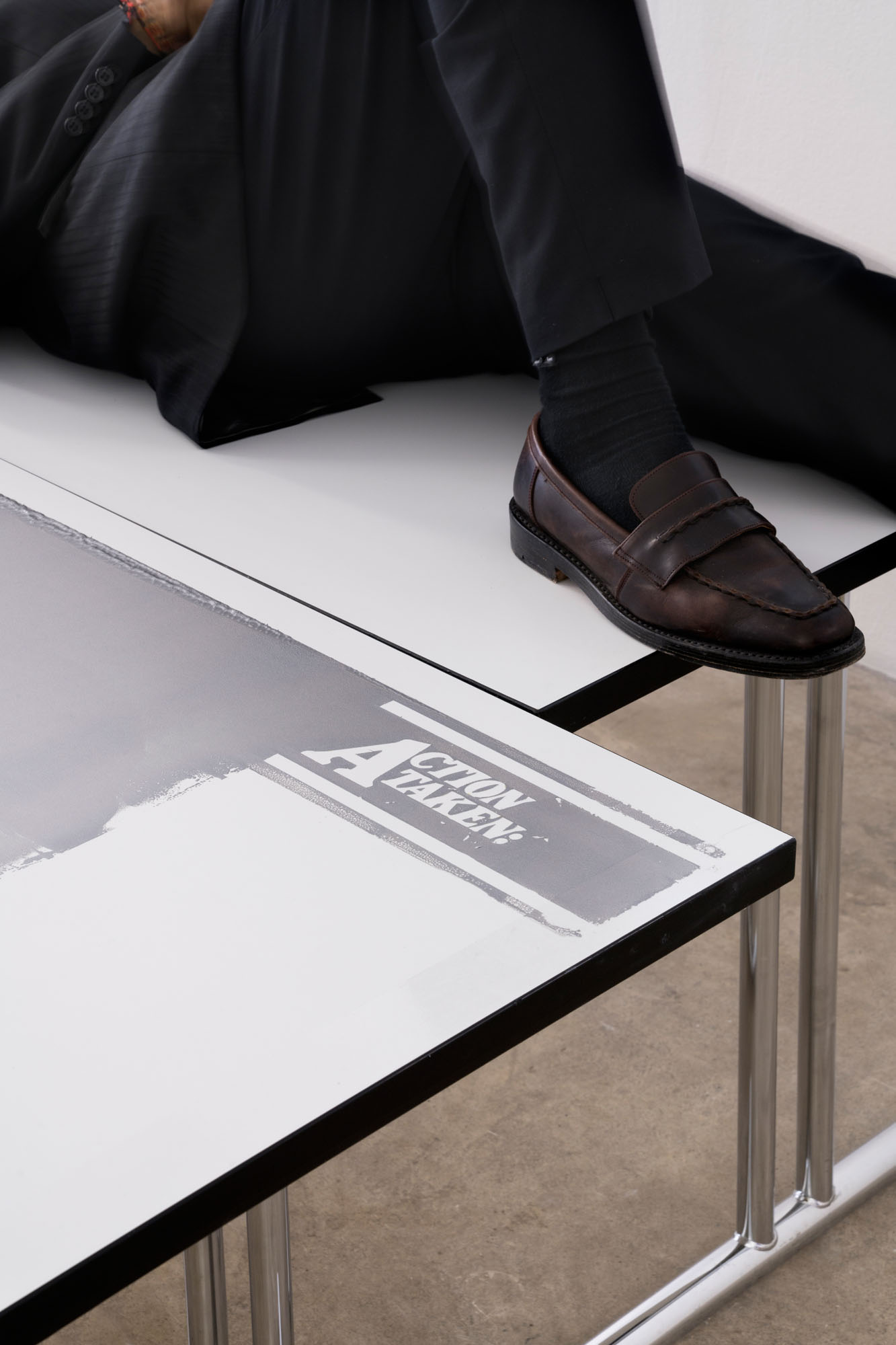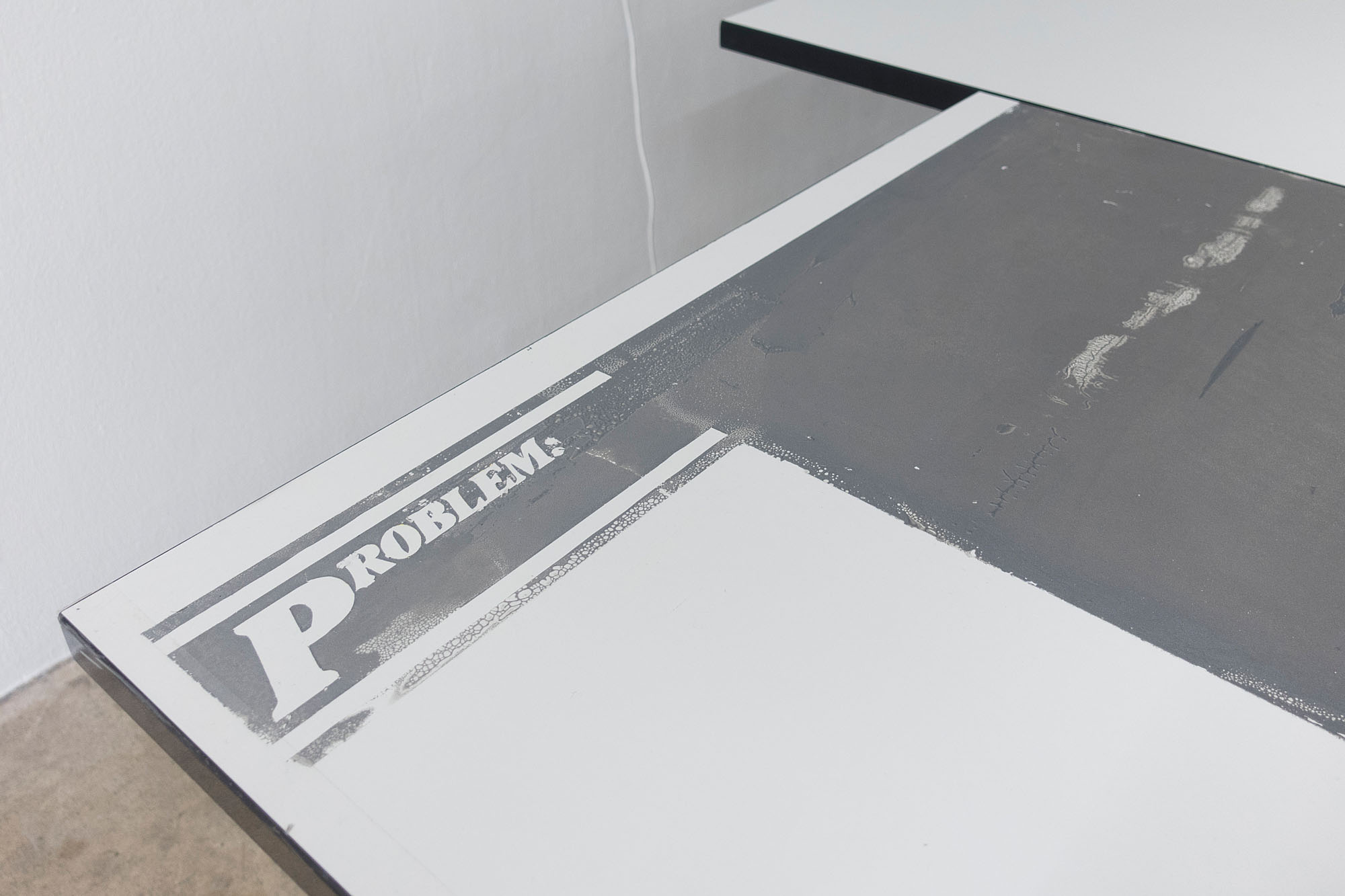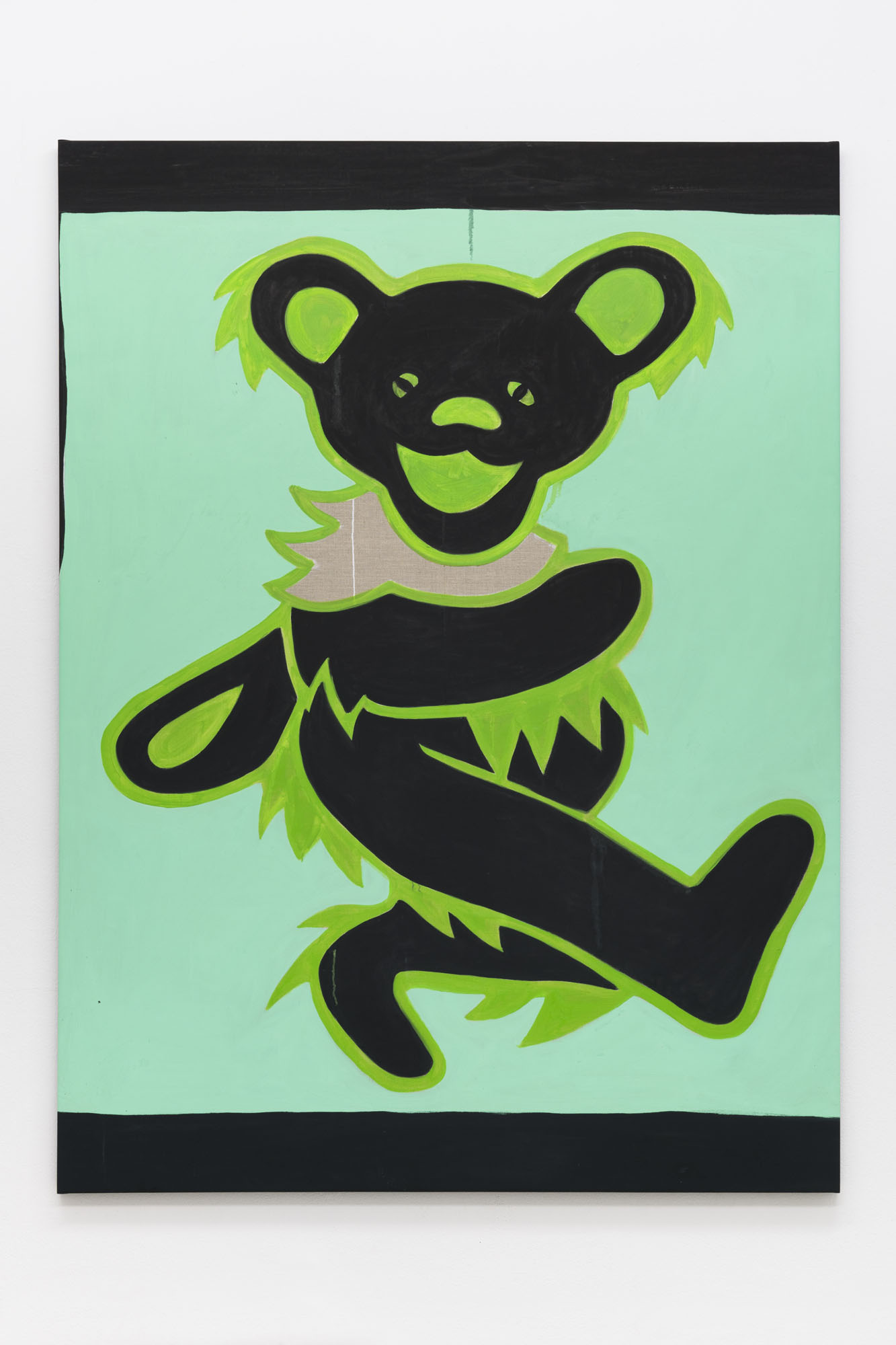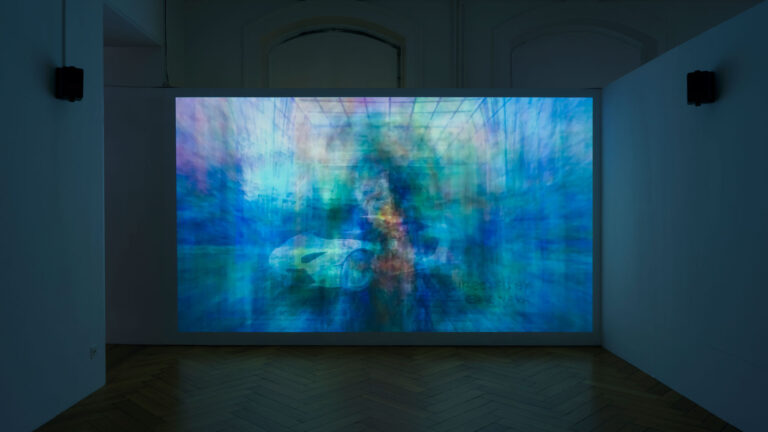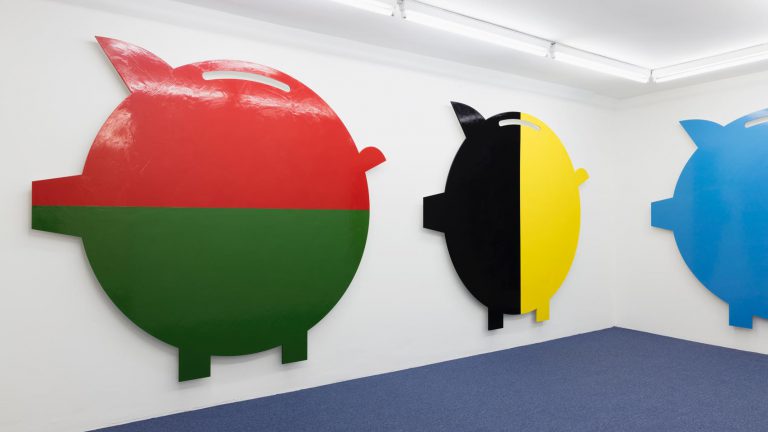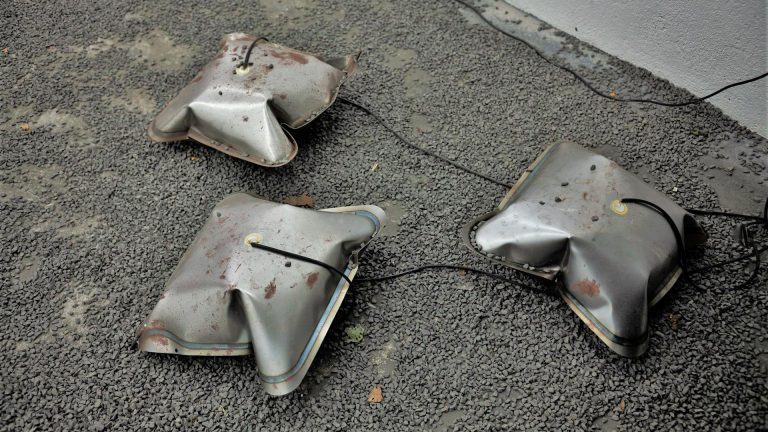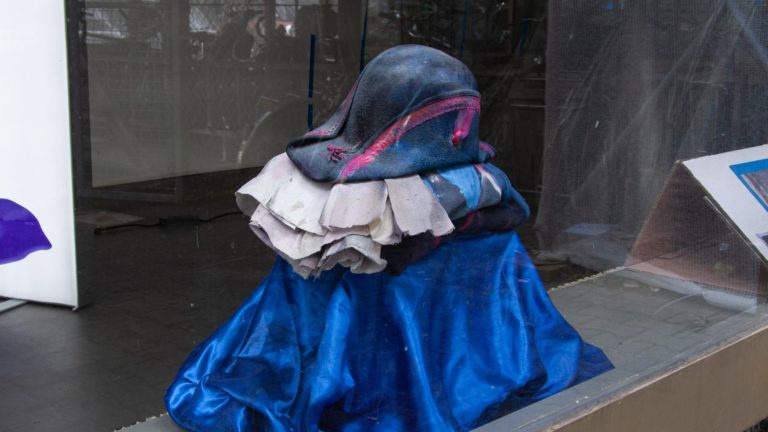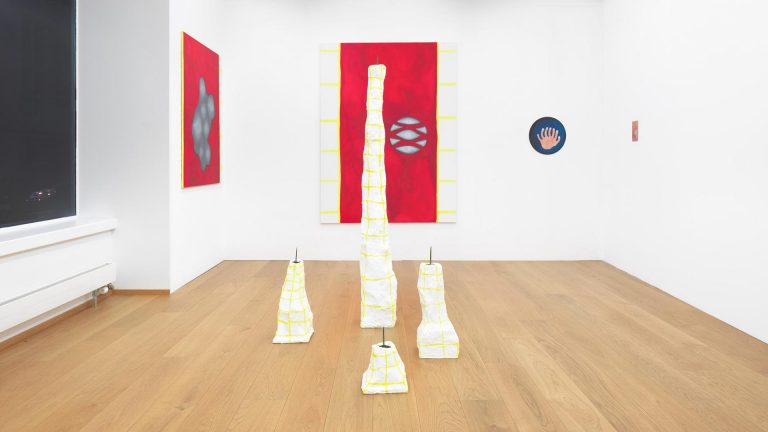Artists: Anna-Sophie Berger, Tina Braegger, Gabriele Garavaglia, Lorenza Longhi
Exhibition title: No Joke
Venue: Milieu, Bern, Switzerland
Date: February 1 – March 7, 2020
Photography: Claude Barrault / all images copyright and courtesy of the artist and Milieu, Bern
Resilience in the Twentieth-First Century [1]
Ulrich Bröckling
The key terms in which the signature of a time are paradigmatically compressed are seldom of a purely descriptive nature. They purport to be equally diagnostic and transformative: they concentrate the challenges which an epoch sees itself as facing and simultaneously show how these may be confronted. They incite action and point out the direction in which it should be directed. For the first two decades of the twenty-first century, such a key concept is without doubt that of resilience.
The concept originally derives from materials physics and, in that context, it indicates the property of elastic materials to return to their starting position after a given deformation. If one transfers the concept onto biological, technical, social or ecological systems, resilience then denotes the oscillation that a system undergoing modification experiences as it attempts, through its own forces, to restore a state of equilibrium. In a further sense, resilience describes the capacity of a system to maintain its fundamental structure and functions by absorbing disturbances or withstanding them.
By now a wealth of attempted definitions and discrete concepts of resilience have arisen — for instance in developmental psychology, social work and health sciences, security research and disaster sociology, ecological systems theory and sustainability research, geography and economics. Although they cannot all be reduced to a least common denominator, they do overlap and influence one another. And there are countless programs to promote resilience in these fields and many others. Resilience serves as an overarching key for dealing with risks, hazardous situations and incalculable events of disruptive change. It is less about preventing them from happening than about developing the ability to adapt oneself to them and to overcome their effects.
Resilience programs are not about altering high-risk conditions, nor about causing individuals or groups to desist from risky behavior. Rather, the measures aim to adapt people to the risks. Instead of the strain being reduced, one’s capacity for functioning under pressure is increased. One has bid goodbye to the hope that fearful negative future scenarios can be averted. Hardly anyone believes anymore that things will end up all that bad — so long as all of the necessary preventive measures are taken at the appropriate moment. What was once a rage for prevention has shrunk to a mere anticipatory coping: if we can’t prevent something from happening, at least we can be prepared for it. We can’t offer our children a better future, but at least we can equip them for a worse one. The pressure at work (and the even great pressure of not having any) cannot be turned off, but something can be done to avoid becoming desperate. The promotion of resilience is survival training for everyone. Perhaps this also explains the popularity of incorporating elements of outdoor education into resilience programs: instead of storming peaks, you can practice rappelling. The strain-relieving function of such a logic of action is obvious: it allows one to actively deflect paralyzing feelings of helplessness in the face of negative future prospects — even if only in the context of school field trips or weekend seminars that are far from everyday life.
Observed from the perspective of resilience, threats to the status quo arise primarily from the environment of a given system, while the capacity to cope with them (or not) is attributed primarily to the system itself. Systems and subjects can be more resilient, or less — one person catching a flu virus might end up spending two weeks in bed with a fever, someone else might get away with a bit of the sniffles. There are, on the other hand, critical thresholds, beyond which existence ceases and one irrevocably proves oneself to be not resilient: a person may die, a company may go bankrupt, a village community may unravel, a political order may disintegrate, a lake may pour out, a machine can no longer be repaired. If these thresholds are crossed, the process of disintegration snowballs and can no longer be stopped. Interventions aimed at increasing resilience may therefore try to enable systems to adapt to threats while maintaining distance from the critical thresholds. Because these are not fixed and, due to their nonlinear dynamics, cannot be calculated in advance, resilient systems must be able to expect the unexpected — a paradoxical task that requires flexibility and inertia in equal measure.
For the resilient self this means, firstly, that one must always expect the worst, or at least assume that it could happen at any time. Secondly, the resilient self should not go into a permanent state of emergency. Alarmism would be counterproductive and could even heighten the threat by leading to fatigue and apathy. Politically, this results in an opposing pair of strategies: on the one hand to make risk scenarios dramatically clear and to expand security systems, and on the other hand to warn against scaremongering and to promote the stoic virtue of heroic calmness. On the psychological level, this corresponds to an attitude that combines heightened attention with prudent equanimity.
If one understands resilience in this sense as a call to continuously increase one’s adaptability, durability and ability to work under pressure, then the neoliberal undercoat of the concept starts to become visible, linking emancipation with competitiveness. “We can be traumatized,” Marc Neocleous summarizes. “We can prepare to be traumatized, we can be trained to be resilient against the trauma to come, and we can obtain some therapy to help us cope in advance. But we must not be challenged to respond politically. ‘Resilience’ thereby designates an aptitude for little other than keeping things exactly as they are. We can expect to be traumatized collectively but not mobilized politically.”
[1] The following remarks are extracts from the following sources: Ulrich Bröckling, “Resilienz. Belastbar, flexibel, widerstandsfähig” in Gute Hirten führen sanft. Über Menschenregierungskünste, Berlin: Suhrkamp, 2017; and Ulrich Bröckling, “Gut angepasst? Belastbar? Widerstandsfähig? Resilienz und Geschlecht” Handbuch Therapeutisierung und soziale Arbeit, edited by Roland Anhorn and Marcus Balzereit, Wiesbaden: Springer, 2016, pp. 291-408.
Gabriele Garavaglia, Work Sucks, 2017
No Joke, 2020, exhibition view, Milieu, Bern
No Joke, 2020, exhibition view, Milieu, Bern
Tina Braegger, Ladybug, 2020, oil on canvas, 195 × 145 × 4 cm
No Joke, 2020, exhibition view, Milieu, Bern
Anna-Sophie Berger, mud coat (1), 2016, polyester, thread, mud, water, dimensions variable
Anna-Sophie Berger, mud coat (1), 2016, polyester, thread, mud, water, dimensions variable
No Joke, 2020, exhibition view, Milieu, Bern
Detail: Lorenza Longhi, Improved Accuracies, 2020, eight half standard fluorescent tubes welded together in pairs, argon gas, transformer, circa 12 x 121,5 x 5 cm each
Detail: Lorenza Longhi, Improved Accuracies, 2020, eight half standard fluorescent tubes welded together in pairs, argon gas, transformer, circa 12 x 121,5 x 5 cm each
Detail: Lorenza Longhi, Improved Accuracies, 2020, eight half standard fluorescent tubes welded together in pairs, argon gas, transformer, circa 12 x 121,5 x 5 cm each
Gabriele Garavaglia, Poker Face, 2020, performer, sunglasses, rye, variable length
Detail: Lorenza Longhi, Untitled (Tables), 2020, silk-screen and adhesive tape on tables, dimensions variable
Detail: Gabriele Garavaglia, Poker Face, 2020, performer, sunglasses, rye, variable length
Detail: Gabriele Garavaglia, Poker Face, 2020, performer, sunglasses, rye, variable length
Detail: Lorenza Longhi, Untitled (Tables), 2020, silk-screen and adhesive tape on tables, dimensions variable
Detail: Gabriele Garavaglia, Rest in Peace, 2020, ergonomic chair, origami paper, dimensions variable
Detail: Gabriele Garavaglia, Rest in Peace, 2020, ergonomic chair, origami paper, dimensions variable
Gabriele Garavaglia, Windscape Technomind, 2020 | AAC file, 360 degree speakers, environmental
Gabriele Garavaglia, Rest in Peace, 2020, ergonomic chair, origami paper, dimensions variable
No Joke, 2020, exhibition view, Milieu, Bern
Tina Braegger, Cat Noir, 2020, oil on canvas, 195 × 145 × 4 cm

